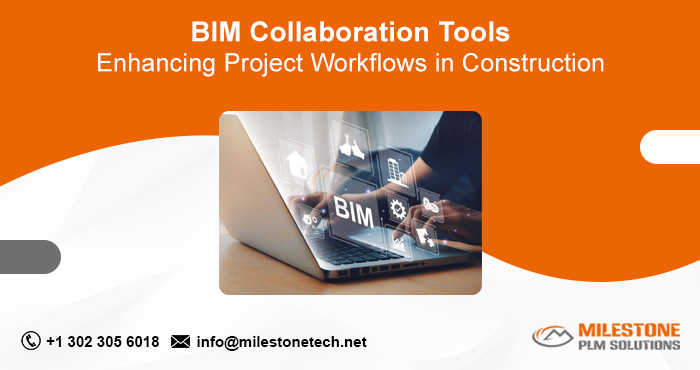BIM Collaboration Tools: Enhancing Project Workflows in Construction

In the fast-evolving construction industry, where timelines are tight and coordination is critical, Building Information Modeling (BIM) has emerged as a transformative approach. Among its many benefits, BIM collaborations play a pivotal role in improving project workflows, reducing errors, and ensuring all stakeholders are aligned from start to finish.
What Are BIM Collaboration Tools?
BIM collaboration tools are digital platforms and technologies that enable stakeholders—such as architects, engineers, contractors, and facility managers—to work on a centralized BIM model. These tools support real-time updates, cloud-based data access, and seamless communication, ultimately creating a more integrated project environment.
Popular BIM collaboration tools include Autodesk BIM 360, Trimble Connect, Revizto, Navisworks, and Bentley ProjectWise. These platforms enhance transparency, accountability, and efficiency throughout the construction lifecycle.
The Importance of BIM Collaborations in Construction
BIM collaborations ensure that project teams—often spread across locations—stay connected, informed, and in sync. Here’s why they matter:
1. Centralized Information Hub
With BIM collaboration tools, all project data resides in a shared environment. Whether it’s 3D models, design files, or clash reports, stakeholders can access the latest version from anywhere. This reduces confusion, eliminates the risk of outdated data, and fosters a single source of truth.
2. Enhanced Coordination Across Disciplines
In traditional workflows, silos between architecture, MEP, and structural teams often result in costly rework. BIM collaborations promote interdisciplinary coordination by enabling live updates and clash detection, allowing teams to identify and resolve issues before construction begins.
3. Improved Communication and Decision-Making
With built-in communication tools, such as comments, markups, and notifications, team members can collaborate directly on the model. This streamlines discussions, speeds up approvals, and helps resolve design conflicts quickly.
4. Time and Cost Savings
Time is money in construction. By minimizing rework, RFIs (Requests for Information), and delays due to miscommunication, BIM collaboration tools contribute significantly to cost savings and on-time project delivery.
Key Features of Effective BIM Collaboration Tools
When selecting a BIM collaboration platform, consider tools that offer the following:
- Cloud-based Access: Allows remote teams to access and update the model in real-time.
- Version Control: Maintains a history of changes to track progress and prevent data loss.
- Clash Detection: Identifies spatial conflicts between different disciplines early in the design process.
- Workflow Management: Automates task assignments, approvals, and notifications.
- Mobile Compatibility: Enables on-site teams to view and interact with models via tablets or smartphones.
- Integration Support: Seamlessly connects with other tools like Revit, AutoCAD, and project management software.
Real-World Benefits of BIM Collaborations
1. Fewer Design Errors : With continuous model sharing and real-time coordination, design discrepancies are caught early. This leads to fewer change orders and less rework on site.
2. Faster Project Delivery : By streamlining coordination and approvals, teams can stick to tighter timelines. BIM collaborations also reduce administrative overhead, freeing up time for value-added tasks.
3. Greater Stakeholder Transparency : Owners and clients can be looped into the BIM environment, allowing them to visualize progress and offer feedback throughout the process.
4. Better Facility Management Post-Construction: BIM data collected during the design and build phases serves as a foundation for long-term maintenance and asset management. Facility managers can access detailed as-built models and systems data, leading to smarter building operations.
Challenges and How to Overcome Them
Despite the benefits, implementing BIM collaboration tools comes with challenges:
- Learning Curve: Training and onboarding are crucial. Organizations should invest in BIM education to ensure team members are equipped to use the tools effectively.
- Data Security: Cloud-based platforms must comply with industry data protection standards. Always choose tools with robust encryption and access controls.
- Resistance to Change: Some teams may prefer traditional methods. Change management and leadership support are essential to successful adoption.
Future of BIM Collaborations
The future of BIM collaborations is deeply connected to technologies like artificial intelligence (AI), augmented reality (AR), and digital twins. Integration with IoT devices and sensors will allow real-time monitoring of construction progress and building performance post-occupancy.
Moreover, as sustainability becomes a top priority, BIM collaborations will help model and simulate energy consumption, material usage, and environmental impact, leading to greener and more efficient buildings.
Conclusion:
In today’s competitive construction landscape, leveraging BIM collaboration tools is no longer optional—it’s essential. These tools not only enhance communication and coordination but also unlock significant time and cost efficiencies across all project phases.
By embracing BIM collaborations, construction firms position themselves for higher productivity, better stakeholder satisfaction, and long-term success.
Follow Milestone PLM Solutions for AEC Industry Updates, CAD Tips and Global Construction News.
Milestone PLM Solutions with its exclusive delivery center in India is a global CAD, BIM outsourcing partner serving the needs of the AEC industry since 2004. MILESTONE focuses on the unique needs of clients and believe in tackling real-life problems with efficiency, smooth and ease.
The MILESTONE team can assist you with DD Set, CD Set, BIM Modeling, Rendering, walk through and more. We support multiple BIM software including AUTOCAD REVIT, Architecture cad, Cabinet Vison, Vector works etc. Our approach is to provide a dedicated team for each customer over ongoing project and deliver the quality output consistently.
With our state of art technology and large talent pool of Engineers & Architects, we are developing best in class solutions for our customers across the globe. We align with your culture and values to form unbreakable partnerships and are primed for success with over 100 employees and 150 customers in the US, Europe, India, and Asia.
You can email us at info@milestonetech.net and can log in to our website www. milestonetech.net to know more about our services and our work portfolio or contact us on +1-302-305-6018
